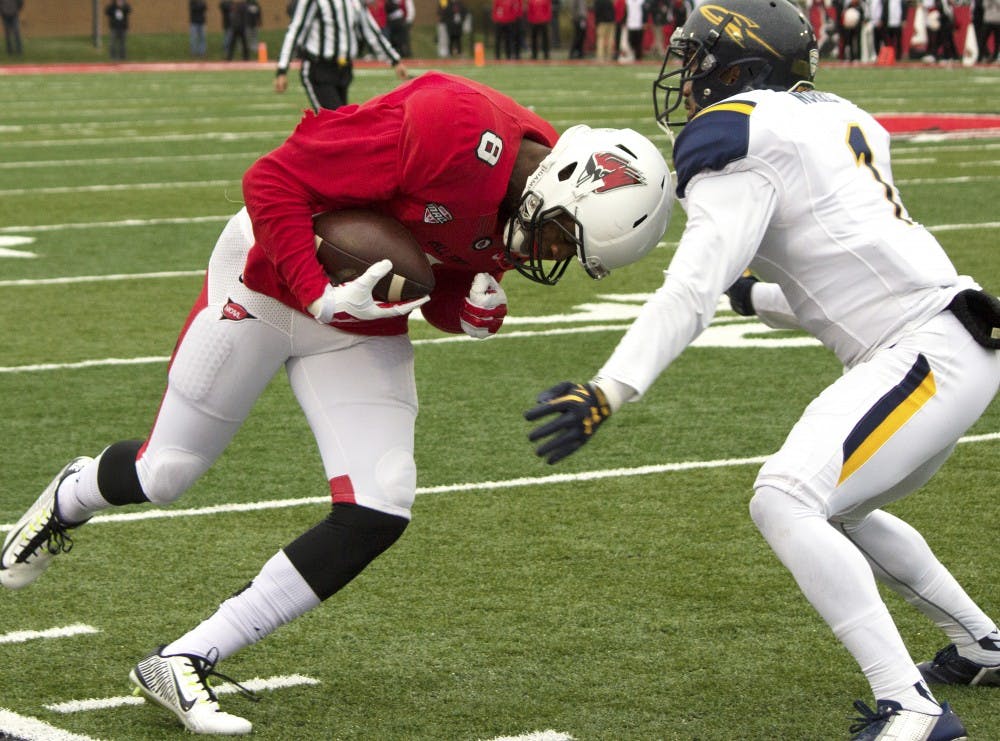As several college athletic conferences, including the Mid-American Conference, have come to a standstill due to the COVID-19 pandemic, many athletes have been forced to redshirt this year.
The National Collegiate Athletic Association defines a “redshirt season” as “a year in which a student-athlete does not compete at all against outside competition.” According to the NCAA, while the athlete cannot compete with his or her team, he or she can practice and participate in other non-competitive activities.
In a normal athletic year, players might redshirt because of transfer rules, which require a player to sit out his or her first year upon arrival. In other instances, athletes might suffer an injury early in the season, granting them an extra year of eligibility.
This past August, the NCAA Division I Council announced it will grant all fall athletes an extra year of eligibility, whether they participate in the 2020-21 season or not. The NCAA made this decision amid the cancellation of many fall sports.
Redshirt senior defensive end James Jennette III redshirted as a freshman.
“It was a coaching decision for me to redshirt,” Jennette III said. “I was just too small and did not know the technique very well. I was late to some meetings and was not mature enough to handle my responsibilities at the time.”
In football, the most common redshirt candidates are incoming freshmen. This gives the player an entire year to adjust to college life, academic rigor and new responsibilities, such as learning the coach’s scheme and playbook.
Redshirting can be difficult for some athletes, especially for high-caliber players who are new to the college level and are not used to sitting out during competition. Like Jennette, junior linebacker Jordan Williams also spent his freshman year as a redshirt. When Williams learned he’d be redshirting, he said he faced an initial roadblock.
“My first thoughts were slightly disappointing,” Williams said. “You never play on a team just to practice — you always want to touch the field on game day to help your team as much as possible.”
However, as the year progressed, Williams became more comfortable with the idea of redshirting. He said he started to understand the concept’s meaning while witnessing the good that had come out of it for his older teammates.
“I asked other players who had been redshirted in the past about the process, and they told me how great of a decision it was,” Williams said. “Those players that have redshirted are honestly some of the best players that have walked through this program.”
During the week, Jennette III and Williams had similar routines to their peers. They would complete their early morning lift and proceed to practice. If they were not chosen to dress on game day, they would either watch the game in the stands or on TV, depending on whether it was a home or on the road.
Jennette III credits Ball State’s coaching staff for assisting him with his redshirt season.
“They encouraged me to keep my head down and work,” he said. “They let me know my time would come and when I got the opportunity to make the most of it.”
Williams, who earned the “Scout Team Player of the Year” award during his redshirt campaign, mentioned his family as his biggest support system. His father, Anthony — who played football at the University of Illinois — was happy for him to get an opportunity to become stronger and faster. Football was important to Williams, but his mother, Demmie, also understood the academic aspects.
“My mom expressed that she was happy for the sake of my grades and that I was able to redshirt and get an understanding with school at this level,” Williams said.
Unlike Jennette III and Williams, freshman cornerback Derin McCulley battled an injury during his redshirt season. McCulley said once he suffered his injury and was informed about the redshirt, he wanted to keep a positive mindset.
“Once I accepted it, I just tried to get better every day,” McCulley said. “Whether that was working on the bike, watching practice or studying film, I wanted to get better.”
Now that he is healthy again, McCulley said he is thankful when reflecting on the 2019 season.
“It was a blessing in disguise,” McCulley said.
Meanwhile, Jennette III and Williams have since become starters for the Cardinals’ defense. Both experienced breakout seasons in 2019 and each look back to their redshirt season as an important role in where they are today.
“I would not have had a strong foundation to build from without that season,” Jennette III said. “Not only that, but it also gave me such a boost in confidence when I was able to handle myself when I first saw game action.”
Although some athletes might look down on the label “redshirt,” Jennette III, McCulley and Williams said they learned from the process, ultimately becoming better athletes on the field and better students in the classroom.
Contact Charleston Bowles with comments at clbowles@bsu.edu or on Twitter @cbowles01.




